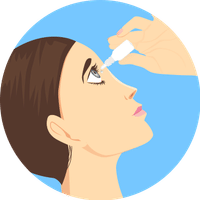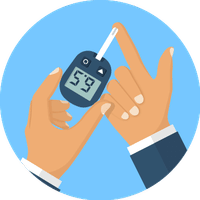Buscogast Plus Tablet

Rs.78.60for 1 strip(s) (10 tablets each)
food interaction for Buscogast
alcohol interaction for Buscogast
pregnancy interaction for Buscogast
lactation interaction for Buscogast
food
alcohol
pregnancy
lactation
Buscogast Plus Tablet may be taken with or without food, but it is better to take it at a fixed time.
None
None
CAUTION
It is unsafe to consume alcohol with Buscogast Plus Tablet.
UNSAFE
Buscogast Plus Tablet may be unsafe to use during pregnancy. Although there are limited studies in humans, animal studies have shown harmful effects on the developing baby. Your doctor will weigh the benefits and any potential risks before prescribing it to you. Please consult your doctor.
CONSULT YOUR DOCTOR
Buscogast Plus Tablet is safe to use during breastfeeding. Human studies suggest that the drug does not pass into the breastmilk in a significant amount and is not harmful to the baby.
SAFE IF PRESCRIBED
SALT INFORMATION FOR Buscogast
Hyoscine butylbromide(10mg)
Uses
Hyoscine butylbromide is used in the treatment of pain due to smooth muscle spasm. It is used to relieve cramps in the muscles of stomach, intestine, bladder and ureter. It can also be used to relieve the symptoms of Irritable Bowel Syndrome (IBS).
How it works
Hyoscine butylbromide is an anticholinergic medication. It works by relaxing the muscles in the stomach and gut (intestine). It stops sudden muscle contractions (spasms), thereby relieving cramps, pain, bloating, and discomfort.
Common side effects
Dryness in mouth, Nausea, Diarrhea, Constipation, Vomiting, Insomnia (difficulty in sleeping), Heartburn, Confusion, Vertigo, Hypotension (low blood pressure), Sweating, Increased liver enzymes, Increased white blood cell count (eosinophils), Decreased white blood cell count (lymphocytes), Low blood platelets, Purpura, Agranulocytosis (deficiency of granulocytes in the blood), Breathlessness, Ringing in ear, Abdominal pain, Flatulence, Dyspepsia, Gastritis, Depression, Tachycardia, Skin reaction, Urinary retention, Anaphylactic reaction, Shock
Paracetamol(325mg)
Uses
Paracetamol is used for pain relief and fever. It is used to relieve pain in conditions like headache, muscle pain, or dental pain.
How it works
Paracetamol is an analgesic (pain reliever) and anti-pyretic (fever reducer). It works by blocking the release of certain chemical messengers that cause pain and fever.
Common side effects
Hallucination, Abnormal vision, Hypoglycemia (low blood glucose level), Sterile pyuria, Liver toxicity, Headache, Constipation, Itching, Nephropathy, Hypersensitivity, Platelet disorders, Confusion, Depression, Hemorrhage, Insomnia (difficulty in sleeping), Nausea, Vomiting
SUBSTITUTES FOR Buscogast
5 Substitutes
5 Substitutes
Sorted By
 Rs. 57.80save 29% more per Tablet
Rs. 57.80save 29% more per Tablet Rs. 140.63pay 54% more per Tablet
Rs. 140.63pay 54% more per Tablet Rs. 89.06pay 9% more per Tablet
Rs. 89.06pay 9% more per Tablet Rs. 91.88pay 12% more per Tablet
Rs. 91.88pay 12% more per Tablet Rs. 56.16save 31% more per Tablet
Rs. 56.16save 31% more per Tablet
Expert advice FOR Buscogast
- Take it at the same time every day, either with or without food.
- Do not skip any dose and finish the complete course as suggested by the doctor.
- Use caution while driving or doing anything that requires concentration as Hyoscine butylbromide can cause dizziness and sleepiness.
- It may cause diarrhea. Drink plenty of fluids to avoid dehydration while taking this medicine.
- Avoid drinking alcohol while taking this medicine as it may lead to side effects.
- Inform your doctor if you are pregnant, planning pregnancy and breastfeeding.
Frequently asked questions FOR Buscogast
Hyoscine butylbromide
Q. What does Hyoscine butylbromide treat and how does it work?
Hyoscine butylbromide is used for treating pain due to smooth muscle spasm. It acts by relaxing the smooth muscles in your stomach and gut (intestine). This gives relief from cramping pain in the stomach and other discomforts like bloating.
Q. Is Hyoscine butylbromide the same as scopolamine?
Scopolamine is the brand name of Hyoscine butylbromide
Q. Is it an anti-histamine?
It is not an anti-histamine
Paracetamol
Q. What if I vomit after taking Paracetamol?
If you vomit in less than 30 minutes after having a dose of Paracetamol tablets or syrup, retake the same dose again. If you vomit after 30 minutes of a dose, you do not need to take another one until the next standard dose.
Q. When will I feel better after taking the Paracetamol?
Usually, you will start feeling better after about half an hour of taking a Paracetamol.
Q. How often can I take the Paracetamol?
You should only take four doses of Paracetamol in 24 hours. There should be a gap of at least 4 hours between two doses. Do not take Paracetamol for more than 3 days without consulting a doctor first.

















